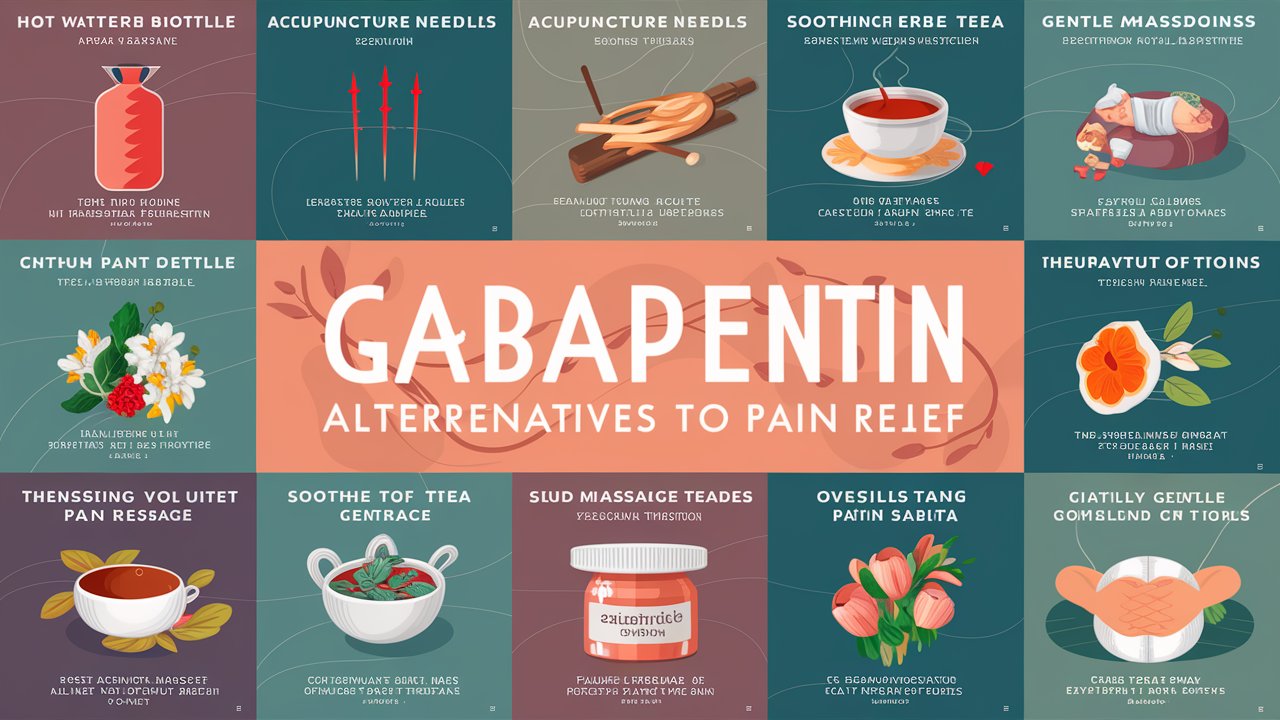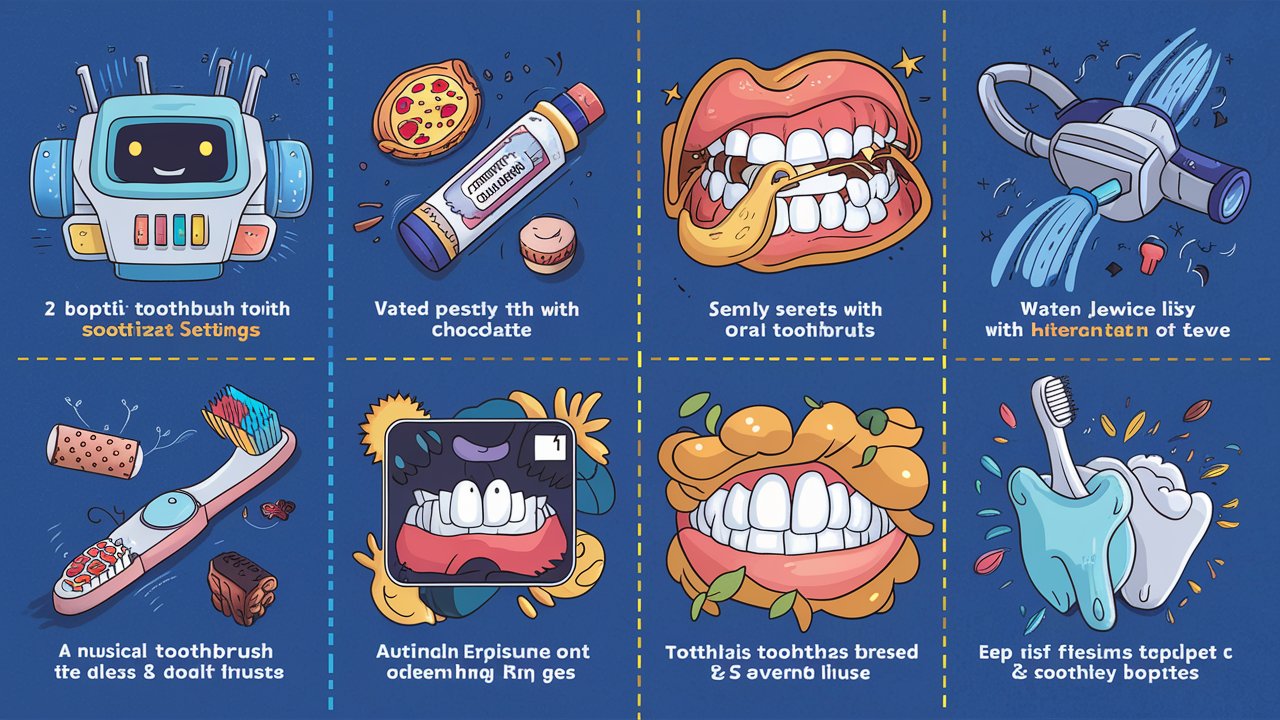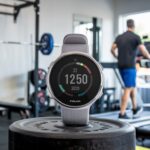Here is a table comparing 8 alternatives to CPAP for treating sleep apnea, along with their pros and cons:
| Treatment | Pros | Cons |
|---|---|---|
| Oral Appliances | – Custom-fit for comfort – Effective for mild-to-moderate sleep apnea – Easy to use and maintain – Convenient for travel |
– May cause tooth or jaw pain
– Less effective than CPAP for severe sleep apnea
| Bilevel Positive Airway Pressure (BiPAP) | – Allows for different pressure settings for inhalation and exhalation – May be more comfortable than CPAP |
– Can be more complex to use than CPAP
– May be less effective than CPAP for some patients
| Expiratory Positive Airway Pressure (EPAP) | – Uses valves to create air pressure when exhaling, keeping the airway open – Doesn’t require a machine |
– May be less effective than CPAP
– Can cause nasal irritation or discomfort
| Positional Therapy | – Uses devices to keep you sleeping on your side – Effective for some patients with positional sleep apnea |
– May be uncomfortable or inconvenient
– Doesn’t treat the underlying cause of sleep apnea
| Weight Loss | – Can significantly improve sleep apnea symptoms – Improves overall health |
– Difficult to achieve and maintain significant weight loss
– Doesn’t treat the underlying cause of sleep apnea
| Myofunctional Therapy | – Uses exercises to strengthen the muscles in the tongue, soft palate, lips, and face – May help reduce apnea events |
– Requires consistent practice over several months
– May not be effective for all patients
| Surgery | – Can permanently correct anatomical issues causing sleep apnea – May be an option for patients who can’t tolerate CPAP |
– Carries risks associated with any surgery
– May not be effective for all patients
| Nasal Valve Therapy | – Uses small, removable nasal devices to keep the nasal valve open – Doesn’t require a machine |
– May cause nasal discomfort or irritation
– May not be effective for all patients In summary, while CPAP remains the gold standard treatment for moderate to severe sleep apnea, there are several effective alternatives available depending on the individual’s specific needs and preferences. It’s important to discuss all options with a healthcare provider to determine the best course of treatment.
Tired of the traditional CPAP machine as your go-to answer for sleep apnea? Ready to uncover a world of refreshing alternatives that can have you breathing freely once again? It’s time to step into a realm brimming with possibilities beyond the usual norms.
Welcome to a journey where empowerment meets exploration, where diverse perspectives converge, and where conventional methods make way for innovative solutions.
In this captivating expedition, we invite you to embrace the idea that better sleep quality can be achieved through unconventional means. Dive headfirst into a realm of possibilities that extend far past what you’ve known before.
With an open mind and a thirst for discovery, let’s unravel the mysteries of oral appliances, positional therapy techniques, weight management strategies – all designed to shake up your approach to combating sleep apnea.
Are you ready to break free from the ordinary and tiptoe into a world where playfulness meets resourcefulness in pursuit of optimal health? Join us on this enlightening voyage as we delve deep into 8 game-changing alternatives that could revolutionize your nightly routine and uplift your well-being.
Oral Appliances: Embrace Comfortable Solutions for Restorative Sleep.
Are you searching for an alternative to the traditional CPAP machine that offers comfort and efficacy? Look no further than custom-made oral appliances, a soothing option to keep your airways open during sleep.
These devices are crafted to fit the unique contours of your mouth, offering a personalized solution that promotes unobstructed breathing throughout the night. By understanding how oral appliances gently adjust your jaw position to prevent airway collapse, you can embark on a journey towards better sleep quality without the constraints of bulkier equipment.
Imagine drifting off into slumber with a discreet oral appliance that seamlessly integrates into your nightly routine, enhancing airflow and reducing disruptions associated with sleep apnea. The benefits extend beyond improved breathing, providing a sense of liberation from restrictive masks and loud machinery.
With the aid of oral appliances, individuals can reclaim restful nights while empowering themselves with a non-invasive approach to managing their sleep apnea symptoms. From enhanced comfort to enhanced sleep quality, these devices offer a pathway towards revitalizing your rest experience.
By exploring the realm of oral appliances as an alternative to CPAP therapy, individuals can unlock a realm of possibilities for addressing their sleep apnea concerns proactively. Picture waking up rejuvenated after a peaceful night’s sleep – all achievable through the innovative design and functionality of these custom devices.
As you delve deeper into the nuances of oral appliances’ role in promoting open airways during slumber, seize this opportunity to embrace a refreshing change in your sleep health journey. Let comfort guide your path towards better breathing and revitalized vitality each morning, setting the stage for empowered well-being through transformative alternatives to CPAP therapy.
Dive into the realm of positional therapy, a fascinating alternative to CPAP that offers promising results in improving sleep apnea symptoms. Positional therapy revolves around maintaining a specific sleeping position to prevent airway obstruction during sleep, ultimately reducing the severity of apnea episodes.
By exploring different devices and methods tailored to help individuals stay in optimal positions throughout the night, you can take proactive steps towards enhancing your overall sleep quality without relying solely on traditional treatments like CPAP.
Imagine incorporating a simple device or technique into your bedtime routine that aligns with your body’s needs, promoting uninterrupted breathing and restful sleep.
From specialized pillows designed to encourage side-sleeping positions to wearable aids that gently remind you to adjust your posture during the night, positional therapy opens up a world of possibilities for those seeking non-invasive approaches to manage sleep apnea.
Understanding how these methods work synergistically with your body’s natural rhythms empowers you to make informed decisions about your sleep health while fostering a sense of control over your well-being.
As you explore the effectiveness of positional therapy in alleviating sleep apnea symptoms, consider the personalized nature of these solutions that cater to individual comfort levels and preferences.
By comparing the benefits of traditional interventions like CPAP with the unique advantages offered by positional therapy, you can embark on a journey towards discovering what works best for you.
Embracing diverse perspectives and innovative approaches in managing sleep apnea encourages a holistic view of wellness, inviting you to uncover refreshing alternatives that resonate with your lifestyle and aspirations for better health.
Weight Management.
Ever wondered how shedding a few pounds could lead to better sleep? The relationship between weight management and improved sleep apnea symptoms is profound. Research shows that excess weight, especially around the neck and throat area, can exacerbate airway obstructions during sleep, contributing to the severity of sleep apnea.
However, by taking proactive steps towards weight loss, individuals can experience significant improvements in their breathing patterns overnight. It’s like giving your airways more room to do what they’re meant to– function properly.
Making changes towards sustainable weight management not only benefits your waistline but also transforms your quality of sleep. By adopting healthier lifestyle habits such as balanced nutrition and regular physical activity, you’re not just addressing the numbers on the scale; you’re directly impacting how well you breathe during rest.
Picture this: every pound shed is a step closer to unburdening your airways and allowing oxygen to flow freely throughout your body while you slumber peacefully.
Imagine waking up feeling refreshed and energized, all because you took charge of managing your weight effectively. From healthy meal choices that nourish your body to enjoyable exercise routines that strengthen your respiratory muscles – the path towards better sleep health through weight management is an empowering journey worth embarking on.
Let’s celebrate each milestone along the way with renewed vigor and a newfound appreciation for how interconnected our well-being truly is; let’s breathe deeply into a future where restful nights are no longer just a dream.
Nasal Dilators: Breathe Easy with Non-Invasive Solutions.
When seeking alternatives to CPAP therapy, exploring non-invasive options like nasal dilators can offer a breath of fresh air, quite literally. Nasal dilators are innovative devices designed to address nasal congestion and enhance airflow during sleep, tackling common issues associated with sleep apnea such as snoring.
By gently opening the nasal passages, these dilators work to optimize breathing patterns throughout the night, promoting better respiratory function without the need for bulky masks or loud machines.
Diving into the world of nasal dilators reveals a diverse range of options tailored to individual preferences and needs. From soft silicone inserts to external strips, users can choose from various designs that suit their comfort and efficacy requirements.
For example, some individuals may find relief with reusable nasal cones that fit discreetly inside the nostrils, facilitating smoother airflow and reducing nasal resistance. On the other hand, adhesive nasal strips applied externally can help lift and support the nasal passages, allowing for improved breathing dynamics without invasive procedures.
Understanding how nasal dilators can positively impact sleep apnea symptoms sheds light on their significant role in enhancing sleep quality. By improving nasal airflow and reducing obstructions that contribute to snoring or disrupted breathing patterns, these devices pave the way for restful nights and rejuvenating sleep.
Incorporating nasal dilators into your bedtime routine might just be the small change that makes a big difference in your overall sleep health, providing a simple yet effective alternative to traditional CPAP therapy.
In summary, when considering refreshing alternatives to CPAP therapy, don’t underestimate the power of non-invasive solutions like nasal dilators. Embrace the opportunity to breathe easy during your slumber by exploring different types of nasal dilators available in today’s market.
Say goodbye to noisy machines and cumbersome masks – opt for a comfortable and effective method that supports optimal airflow and enhances your sleep experience naturally. Discover how these tiny tools can make a huge impact on your well-being through improved breathing patterns and peaceful nights ahead.
Acupuncture Therapy: Orchestrating Wellness Through Ancient Practices.
Embark on a journey of ancient wisdom with acupuncture therapy, a holistic approach that holds promising benefits for managing sleep apnea symptoms beyond traditional CPAP methods.
Acupuncture, rooted in Chinese medicine, delves deep into the interconnectedness of our body’s energy channels to foster relaxation and optimize breathing patterns during sleep. By strategically targeting specific acupoints, this therapeutic technique aims not only to improve physical well-being but also enhances the overall quality of your sleep.
Imagine a scenario where John, a long-time sufferer of sleep apnea, decides to explore acupuncture as an alternative remedy. Through gentle stimulation of key acupoints associated with respiratory health, John experiences a profound sense of calmness and improved airflow during his nightly slumber.
With regular acupuncture sessions tailored towards addressing his individual needs, John begins to notice a significant reduction in the severity of his sleep apnea episodes, leading to more restful nights and revitalized mornings.
By embracing the transformative power of acupuncture therapy, individuals like John can cultivate better overall well-being and reclaim control over their sleep health. The fusion of ancient healing practices with modern approaches exemplifies the versatility and effectiveness of alternative solutions in enhancing one’s quality of life.
So why not take a moment to consider how acupuncture could be an empowering addition to your journey towards better sleep and vitality? Let’s unravel the threads connecting mind, body, and breath through the artistry of acupuncture and pave the way for rejuvenated nights ahead.
Yoga & Breathing Exercises for Sleep Apnea Relief.
Imagine winding down after a long day, shifting into gentle yoga poses that not only soothe your mind but also help improve your ability to breathe freely during sleep. Yoga and breathing exercises offer a refreshing alternative to CPAP by focusing on enhancing respiratory function naturally.
By engaging in specific yoga poses like the Cobra or Bridge pose, individuals with sleep apnea can stretch and strengthen the muscles around the airways, potentially reducing the risk of obstruction during sleep. These simple yet effective movements aim to support better airflow and relaxation, setting the stage for a restful night’s sleep.
Breathing techniques are also integral components of yoga practices that can benefit those with sleep apnea. By incorporating deep breathing exercises such as diaphragmatic breathing or alternate nostril breathing into your daily wellness routine, you can enhance respiratory efficiency and promote relaxation.
These mindful breathing techniques not only foster improved oxygen circulation but also cultivate a sense of calmness that can be particularly beneficial before bedtime. Through the power of intentional breathwork, individuals may discover a renewed connection with their breath and body, paving the way for enhanced sleep quality.
Integrating simple yoga routines and focused breathing exercises into your daily regimen offers an empowering approach to managing sleep apnea symptoms beyond conventional methods. Embrace the opportunity to explore these alternative practices with an open mind, allowing yourself to tap into the healing potential of movement and breath.
Whether it’s finding comfort in Child’s Pose or practicing a guided deep-breathing session before bed, unlocking the benefits of yoga and breathing exercises can lead you on a path towards greater relaxation, improved respiratory function, and ultimately, a more peaceful night’s rest.
Positive Airway Pressure Devices: Diving Beyond CPA.
PAs you navigate the realm of sleep apnea treatments, exploring beyond the conventional CPAP machines may lead you to innovative paths for better sleep quality. Positive airway pressure devices offer a refreshing alternative worth considering.
These devices, different from traditional CPAPs, provide effective solutions for individuals with obstructive sleep apnea. By comparing the various types available in the market, you can tailor your choice to best suit your needs and preferences.
When delving into positive airway pressure devices, you’ll encounter a diverse array of options. For example, BiPAP (BiLevel positive airway pressure) machines offer distinct advantages over CPAP by adjusting the air pressure levels during inhalation and exhalation to better accommodate your breathing patterns.
Alternatively, VPAP (Variable positive airway pressure) machines provide variable pressure settings based on your unique respiratory requirements throughout the night. By exploring these alternatives with an open mind, you empower yourself to make an informed decision that aligns with your individual sleep apnea challenges.
The unique features of positive airway pressure devices contribute to their effectiveness in treating obstructive sleep apnea. Some models incorporate advanced technologies such as smart algorithms that adapt to changes in your breathing patterns, ensuring continuous optimal airflow without compromising comfort.
By understanding how these innovative devices work and their benefits compared to traditional CPAP offerings, you equip yourself with valuable insights to take proactive steps towards improving your sleep health.
Embark on this journey of discovery with a playful spirit and willingness to explore new possibilities beyond what you may have initially considered. Shedding light on lesser-known alternatives like positive airway pressure devices not only broadens your treatment horizons but also fosters a sense of empowerment in taking charge of your well-being.
The world of innovative sleep apnea solutions awaits—step beyond CPAP and pave a path towards revitalized sleep and enhanced overall quality of life.
Mindfulness Meditation: A Soothing Path to Serenity.
In the realm of sleep apnea management, stress can often be a silent saboteur, exacerbating symptoms and hindering restful sleep. This is where mindfulness meditation strides in as a beacon of calm amidst the chaos of sleep disturbances.
By guiding individuals towards a state of tranquility, mindfulness meditation offers a gentle yet potent tool to reduce stress levels associated with sleep apnea. Through focused breathing exercises and the practice of present moment awareness, individuals can cultivate inner peace that ripples into improved sleep quality.
Imagine winding down before bedtime with a guided mindfulness meditation session designed specifically to ease your mind and body into relaxation. As you engage in deliberate breathwork and purposeful mental grounding, you begin to shed the layers of tension accumulated throughout the day.
This intentional act of self-care not only serves as a prelude to restorative slumber but also works harmoniously to alleviate the stress burden that may contribute to sleep apnea symptoms. By embracing mindfulness meditation, you empower yourself to reclaim sovereignty over your well-being, fostering a serene environment conducive to peaceful nights.
Furthermore, mindfulness meditation isn’t just about fleeting moments of tranquility; it’s a sustainable practice that encourages long-term emotional resilience and mental clarity. By integrating guided meditation techniques into your daily routine, you forge a resilient mindset capable of navigating the peaks and valleys of life with grace.
As stress levels diminish and self-awareness blossoms, you pave the way for profound shifts in how you approach sleep hygiene and overall health. In this evolution towards holistic wellness, mindfulness meditation emerges as not merely an alternative but an empowering cornerstone in your journey towards better health and rejuvenating restfulness.
Embracing Holistic Wellness Through Alternative Paths.
As we conclude this exploration of refreshing alternatives to CPAP, it becomes clear that the path to better sleep health is not a one-size-fits-all journey.
By delving into oral appliances, positional therapy, weight management strategies, nasal dilators, acupuncture therapy, yoga and breathing exercises, innovative positive airway pressure devices, and mindfulness meditation techniques, you have opened yourself up to a world of possibilities beyond traditional treatments.
Each alternative presents a unique opportunity for you to take control of your sleep apnea management in a way that resonates with your individual needs and preferences.
Empowerment lies at the heart of this journey towards improved sleep quality. By being open-minded to diverse perspectives and exploring solutions tailored to your lifestyle, you are not just treating symptoms but actively investing in your well-being.
Remember that the power to breathe freely again rests in your hands as you embrace this holistic approach to wellness. So go forth with curiosity and confidence, knowing that there are myriad paths waiting for you to explore on your quest for restful nights and revitalized days.
I am commitment to crafting compelling narratives and delivering insightful content continues to inspire and inform readers across various platforms. Explore her articles on AlternativesZone.com and FactAfterFact.com to experience a rich tapestry of knowledge and discovery. Here I Analyze and Test the products and services together with my team before we recommend them to our users. Nice Reading Here!











